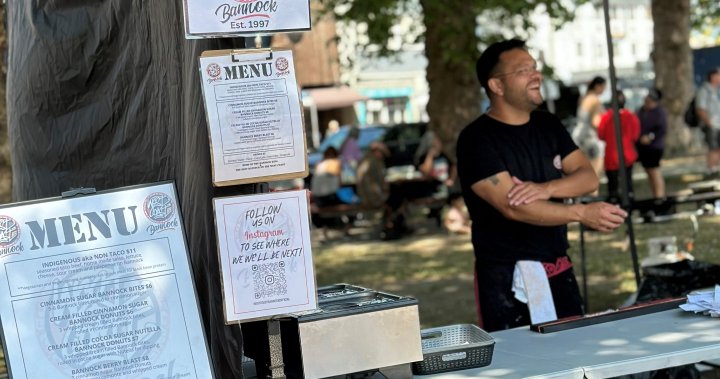
Bannock, frybread and Indian tacos: Bridging cultures with Indigenous eats
Global News
While powwows, bannock and Indian tacos go hand and hand -- the Indigenous food staple is making its way off the powwow trail and helping bridge cultural divides.
While powwows, bannock, frybread and Indian tacos go hand and hand, the Indigenous food staple is making its way off the powwow trail, helping bridge cultural divides and feeding the masses.
Richard Mark has been making bannock since he was a kid. He started “hustling” with his mom to make a little extra cash and the doughy staple got them through some hard times.
“There’s always been bannock around. When I moved to East Van in ’97 there was a West Coast night down at the friendship centre, and my mom started making bannock and going down there and selling it and I started helping out,” said Mark. “It was a good learning experience to be able to do that with my mom.”
“We (would) make stuff for the West Coast night and then we would literally bring a batch of bannock, walk around our building knocking door to door to see if anyone wanted to buy them before we got to West Coast night.”
Now, Mark has made bannock-making into a full-time business with West Coast Bannock.
While a modern Indigenous staple, bannock’s relevance across Indigenous communities originally had a lot to do with survival.
Flour, brought over during colonization, led to bannock’s inclusion in the country’s cuisine. Eventually the Canadian government would ration foods to Indigenous communities like flour and lard, making bannock a necessity to prevent starvation.
But Indigenous people adopted the food, made it their own and it can now be seen as an example of culinary resilience.











